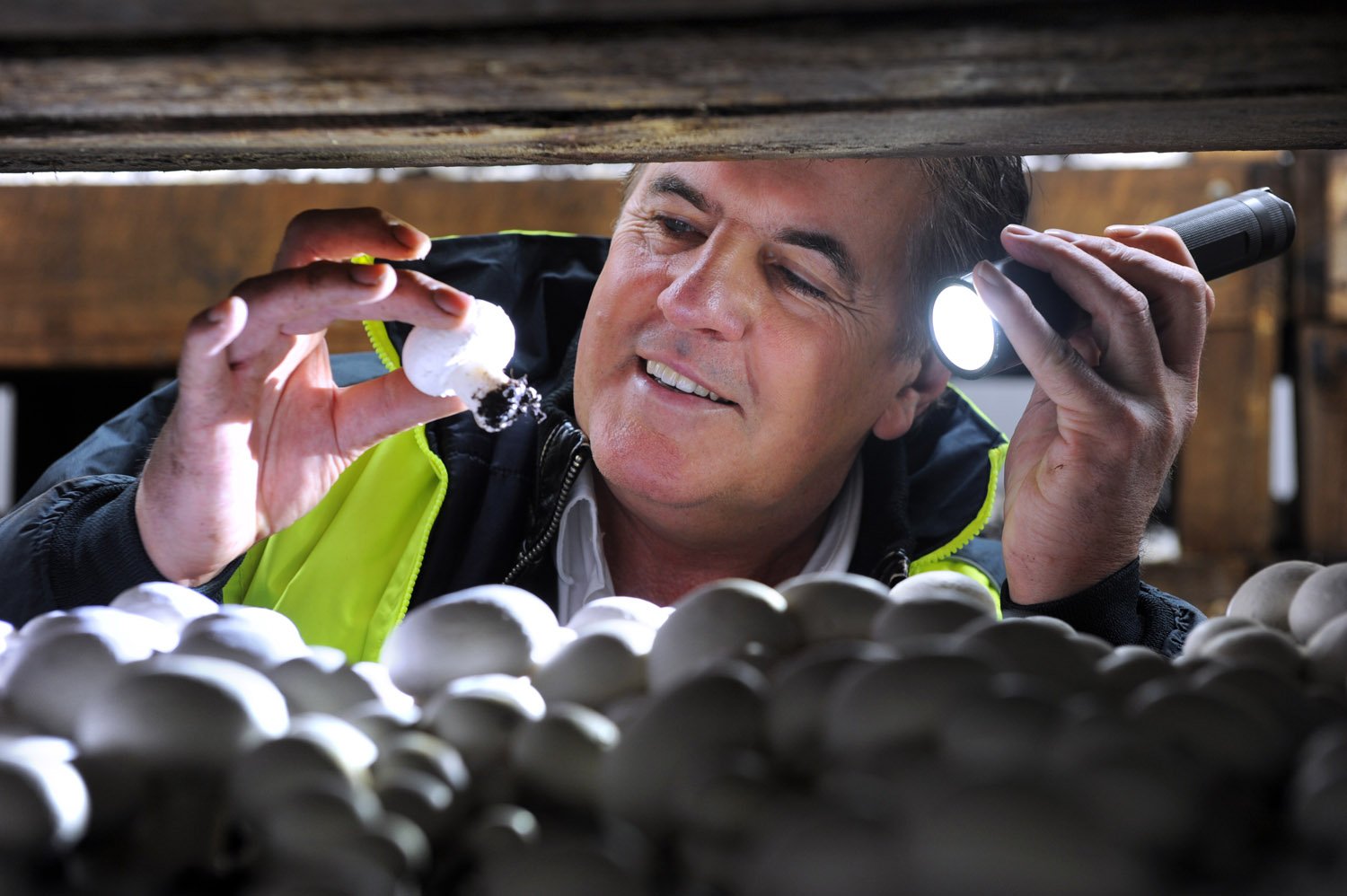
Mushroom grower profile – Phil Rogers, P&L Rogers, SA
With just over 25 years in the business, Phil Rogers knows a thing or two about mushrooms.
“Mushrooms are the sixth most valuable horticultural crop grown in Australia and are worth over 400 million dollars at farm gate. Australian fresh mushrooms are classed as being some of the best quality in the world; this is due to the many intelligent and dedicated people that have contributed their time and innovations to improve substrate phase 1 production.”
Phil started his mushroom career in 1989, at Merbein Mushrooms, as a general hand. There he gained experience palletising, cooling post harvested mushrooms for transport, cool room rotation and delivering pallets of mushrooms to transport depots.
During this time, Phil also discovered a passion for compost and the results it produced. In 1992, he took over managing the compost at Merbein Mushrooms and further spurred his interest in mushroom growing.
“I loved the challenge of making compost. I was most intrigued in composting and read every book/article I could get my hands, and used this knowledge to introduce better management”, said Phil.
The advancements of industry are no means by accident and Phil notes the importance of the interconnected relationship between applied research and development (R&D) on the production side, and marketing to support consumer growth.
In relation to research undertaken by the Australian Mushroom Growers Association (AMGA), Phil remembers the huge and instrumental steps in improvements of substrate preparation in phase 1 that were made.
“The introduction of high pressure forced aeration reducing emissions of bad odours gave significant positive results in mushroom production and quality.”
Phil notes that the pest and disease workshops have also been invaluable to members, improving farmer’s awareness of importance of hygiene and eliminating potential risks to the farm’s viability, including his own.
On the other side of the coin, Phil notes that marketing in Australia over the past 20 years has been extremely well accepted by the public. One of the most memorable campaigns Phil recalls was “MEAT FOR VEGETARIANS”, which drove consumption to a new level.
“Mushroom farms are costly to run and maintain and having successful advertising campaigns allows one to pay back bank loans and reinvest into aging equipment – to produce high quality mushrooms you need to continually reinvest into the farm to ensure it performs to a high standard.”
Phil is excited about what is next for Hort Innovation marketing campaign in May 2016.
“Reading through the lead up to the campaign is most exciting. I cannot wait for this campaign to be launched, as I believe it is well overdue. As a director of the AMGA board, I have had many members ask me, “when we will see our levy money be utilised for advertising mushroom?” It is safe to say the Hort Innovation announcement is well received,” said Phil.
Phil sees a positive outlook for the future of the industry but knows that there is still some hard work ahead to get there.
“I believe our most important challenge is to effectively complete our strategic plan document. This will allow us to forecast and tailor our levy money into R&D and, most importantly, advertising the good news about eating mushrooms on a daily basis. Getting the message to our next generation to include mushrooms in their diet is key – China’s consumption is in order of 15 to 20 kilos per head a year; Australians consume something like 2.8 to 3 kilos a year and this needs addressing.”
P&L crop approximately 1200 M2 each week out of wooden trays. They employ 75 staff and produce 30 to 35 thousand kilos per week of white button mushrooms. They supply the Adelaide fresh produce market, and send to Melbourne, Sydney, Brisbane, Darwin, and Perth. The farm site in South Australia has been home to producing mushrooms for over 50 years.
Copyright: Copyright © Horticulture Innovation Australia Limited 2018. The guide (in part or as whole) cannot be reproduced, published, communicated or adapted without the prior written consent of Hort Innovation (except as may be permitted under the Copyright Act 1968 (Cth)).
Any request or enquiry to so use this guide should be addressed to:
Communications Manager
Horticulture Innovation Australia Limited
Email: communications@horticulture.com.au
